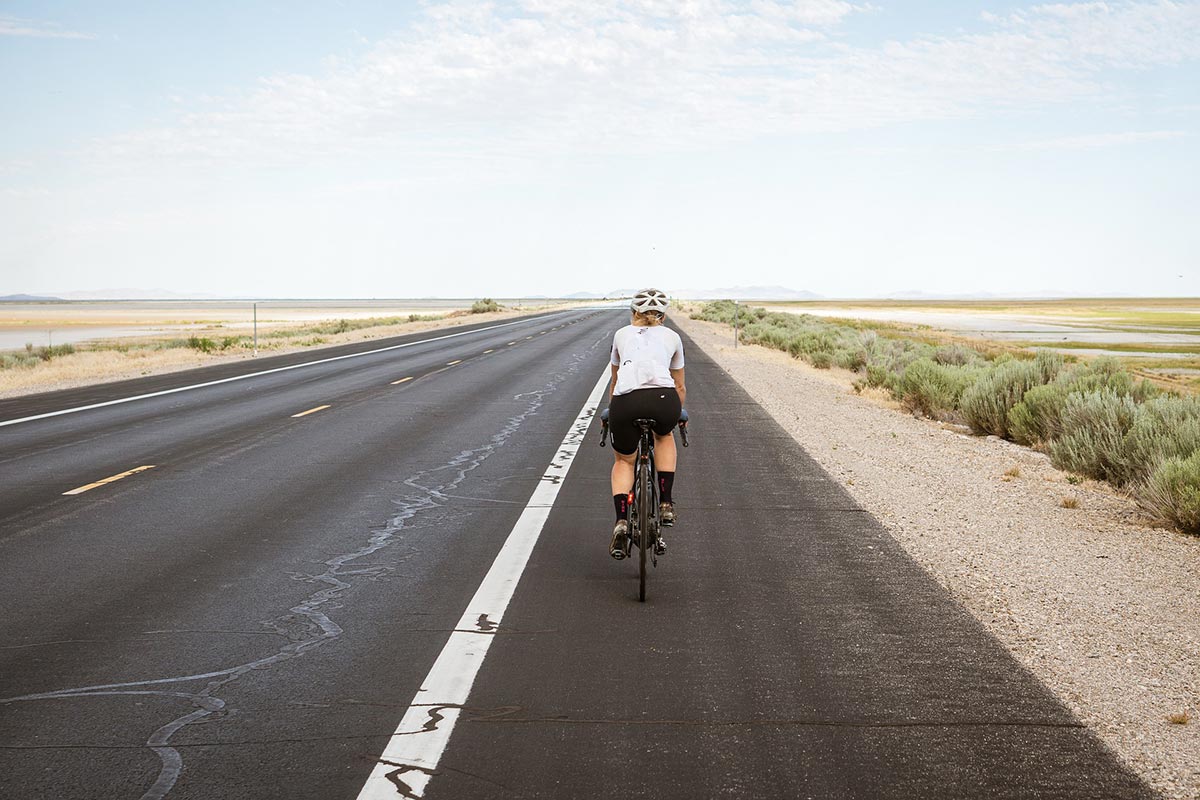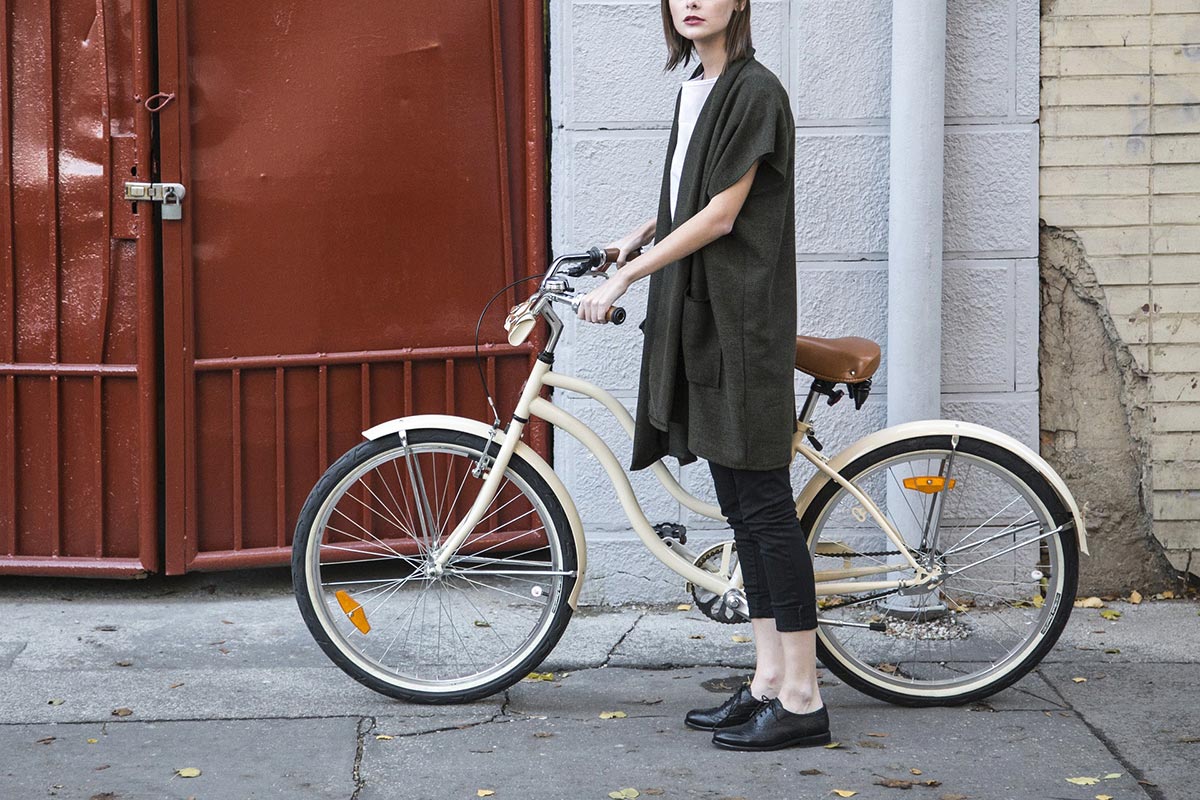Stretches for every kind of cyclist
Summer is upon us and while some COVID-19 restrictions are still in place, biking is a safe way to get outside and get your body moving.
Choosing the right bike for you is important to keep your body pain-free, and a bike shop can help fit you appropriately.
But choosing a bike goes beyond fit—including where you want to ride, what distances you want to cover, and more.
In this blog, the Alberta College and Association of Chiropractors’ looks at three popular bike options, common pain points while riding, and what you can do to prevent and handle discomfort.\
Road bike
 If you’re planning on sticking to smooth, paved roads, road bikes are an excellent choice. With lighter frames and thinner tires, road bikes make for a very smooth and fast ride.
If you’re planning on sticking to smooth, paved roads, road bikes are an excellent choice. With lighter frames and thinner tires, road bikes make for a very smooth and fast ride.
With lower handlebars, riders sit in a leaned forward position. Over time, this can lead to neck and knee pain.
Neck pain
Road bikes are designed for speed, so riders take a bent-forward position while riding to increase aerodynamics. Over time, this position can cause neck pain as you have to keep your head lifted to see in front of you.
Try this for neck pain:
Sitting in a chair, clasp your hands together behind your neck. Slowly bend your head backward, curving your upper back. Hold for 5 seconds and then return to the starting position. Repeat this ten times or until you feel relief.
Knee pain
Road cyclists usually cover a lot of ground in a short amount of time, which can cause a lot of fatigue—specifically in your knees.
Try this for knee pain:
Standing straight, stretch one leg out and rest your heel on the ground. Slowly hinge forward at the hips, keeping your back straight to stretch your hamstrings. Hold for a few seconds and repeat as needed.
While knee pain during cycling isn’t uncommon, it can sometimes signify a bigger problem. Be sure to visit your chiropractor if you have persistent pain, and they can help identify and treat the source of your pain.
Mountain bike
 If you want the ability to go off-road with comfort, a mountain bike is for you. Mountain bikes come with several gears to help navigate steep hills and have thicker tires for rougher terrain. Most mountain bikes come equipped with shock absorbers or suspension to absorb impacts, so your body doesn’t.
If you want the ability to go off-road with comfort, a mountain bike is for you. Mountain bikes come with several gears to help navigate steep hills and have thicker tires for rougher terrain. Most mountain bikes come equipped with shock absorbers or suspension to absorb impacts, so your body doesn’t.
Sore forearms, wrists, and hands
Not only do mountain bikers tend to grip handlebars tightly, but when they are riding on uneven terrain, their wrists are experiencing hard shocks, which can lead to pain and fatigue.
Try this for sore wrists:
Place one arm straight out in front of you and rotate your wrist down and outwards. Use your other hand to further rotate your hand. Be sure to work within a comfortable range of motion and stop if you feel pain. Hold for a few seconds and switch hands.
If you are noticing a lack of range of motion, your chiropractor can help restore range of motion through simple adjustments.
Low back pain
Lower back pain is another common ailment mountain bikers experience. Low back pain can sometimes signify that you need to stretch out your muscles, or that you have a muscle imbalance and need to build strength in some areas.
Try this for low back pain:
Sitting on the ground with your legs out in front of you, put one foot over your leg and cross your opposite arm over that leg to create a gentle twist in your lower back. Hold for a few second and alternate.
Working with your chiropractor will help identify the cause of your low back pain, and they can work with you to recommend stretches and/or strengthening exercises to help restore balance to your muscles.
Cruiser bike
 If the idea of a casual, fun ride is more to your liking, a cruiser bike may be the best fit for you. Cruisers have large tires, upright handlebars, and wider seats. Cruisers are typically single-speed or have a very low range of gears, making this type of bike ideal for short, relaxed trips.
If the idea of a casual, fun ride is more to your liking, a cruiser bike may be the best fit for you. Cruisers have large tires, upright handlebars, and wider seats. Cruisers are typically single-speed or have a very low range of gears, making this type of bike ideal for short, relaxed trips.
Cruiser bikes are also an excellent choice for individuals with knee pain or arthritis as they’re easy to maneuver and don’t require full extension of the knee.
Tight calves
Not unique to cruiser bikes but a common complaint of cycling is tightness in the calves.
Try this for calf tightness:
Standing on a raised surface like a textbook or a step, place the ball of one foot on the edge and slowly bend your knee, letting your heel drop. This will create a stretch in the back of your calf. Hold for a few seconds and alternate.
Tight quads
Like tight calves, tight quads are common with any type of cycling.
Try this for tight quads:
Kneel with one foot on the ground and one knee on the ground, like you’re in a lunge. While in this position, slowly push your hips forward to create a stretch in your upper hips and quads. Hold for a few seconds and alternate. Regardless of what bike you choose, remember, if you’re new to biking, start slow, and listen to your body. It’s not uncommon to experience some soreness and discomfort when you first begin biking. However, if your pain persists or you experience any sort of numbness or loss of sensation, consult with your chiropractor.
Posted on: July 15, 2021Alberta College and Association of Chiropractors
